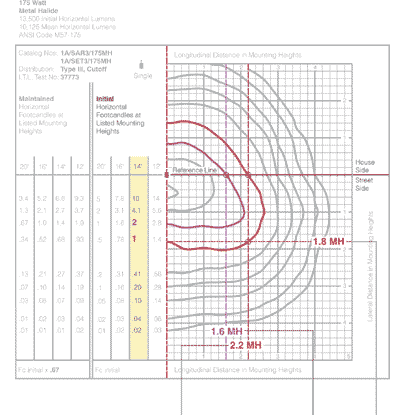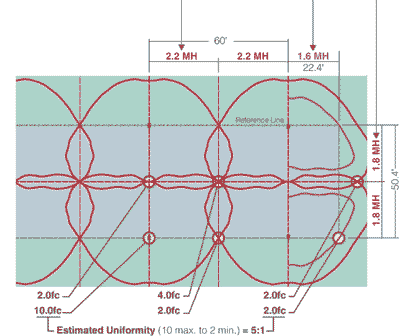Site Lighting: Optical Systems Design and Application Guide for Site and Roadways
The sample site plan in Figure 10 shows how the combination of these four basic distribution patterns are used to direct light energy into the lighted zones.
|
|||||
Important Features for Fine-Tuning Designs
Lamp Orientation: Horizontal lamp orientation provides the greatest control over lateral distribution. The normal lamp distribution is very well suited for asymmetric as well as square symmetric distribution. Horizontal lamp orientation produces relatively small arc tube exposure to high distribution angles. This produces a superior cutoff characteristic.
Vertical lamp orientation subjects the greatest portion of the lamp's output to control by the reflector system, producing optimal vertical distribution control. This orientation provides less control over lateral output, favoring symmetric distribution patterns. Vertical lamp orientation also takes advantage of the higher lumen output produced by a vertical arc tube positioning.











